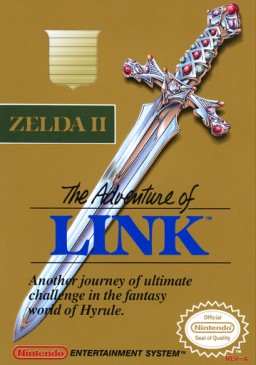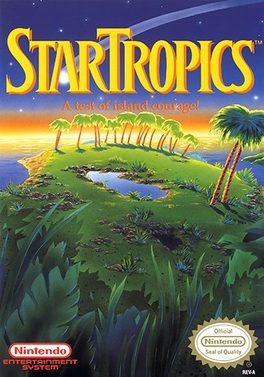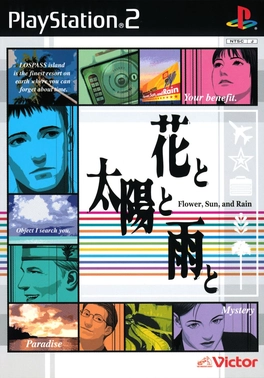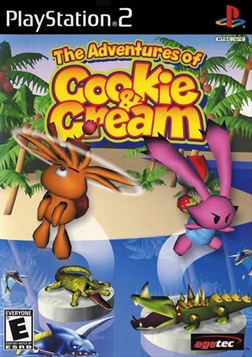Tomb Raider, also known as Lara Croft: Tomb Raider from 2001 to 2008, is a media franchise that originated with an action-adventure video game series created by British gaming company Core Design. Formerly owned by Eidos Interactive, then by Square Enix Europe after Square Enix's acquisition of Eidos in 2009, the franchise focuses on the fictional British archaeologist Lara Croft, who travels around the world searching for lost artefacts and infiltrating dangerous tombs and ruins. Gameplay generally focuses on exploration of environments, solving puzzles, navigating hostile environments filled with traps, and fighting enemies. Additional media has been developed for the franchise in the form of film adaptations, comics and novels. On January 27, 2023, The Hollywood Reporter exclusively reported that Amazon was in the works with Phoebe Waller-Bridge reportedly set to write a TV Show adaptation of the video game franchise. It was also reported this would involve a tie-in video game and movie in an interconnected universe, likened to the Marvel Cinematic Universe.

Final Fantasy Mystic Quest, released as Mystic Quest Legend in PAL regions and as Final Fantasy USA: Mystic Quest in Japan, is a role-playing video game for the Super Nintendo Entertainment System. The game was released as a spin-off to Square's Final Fantasy series of video games. Final Fantasy Mystic Quest was first released in North America in 1992 and marketed as a "simplified role-playing game... designed for the entry-level player" in an attempt to broaden the genre's appeal. The game's presentation and battle system is broadly similar to that of the main series, but it differs in its inclusion of action-adventure game elements. Final Fantasy Mystic Quest was the first Final Fantasy game to be released in Europe.

Zelda II: The Adventure of Link is an action role-playing video game with platforming elements developed and published by Nintendo. It is the second installment in the Legend of Zelda series and was released in Japan for the Famicom Disk System on January 14, 1987—less than one year after the Japanese release and seven months before the North American release of the original The Legend of Zelda. Zelda II was released in North America and the PAL region for the Nintendo Entertainment System in late 1988, almost two years after its initial release in Japan.

Final Fantasy Crystal Chronicles is an action role-playing video game developed by The Game Designers Studio and published by Nintendo for the GameCube. It was released in 2003 in Japan and 2004 in North America, Europe and Australia. A remastered version for Nintendo Switch, PlayStation 4, Android, and iOS was released in August 2020. A spin-off of the Final Fantasy series and beginning of the series of the same name, Crystal Chronicles was the first title in the franchise to be released for a Nintendo home console since Final Fantasy VI in 1994.

Star Fox Adventures is a 2002 action-adventure game developed by Rare and published by Nintendo. The game had a long development cycle starting in 1997. Originally developed as Dinosaur Planet with Rare-created characters as the protagonists, Nintendo producer Shigeru Miyamoto convinced Rare to redesign the game as part of the Star Fox franchise. Its planned release on the Nintendo 64 was cancelled, with development ultimately shifting forward one hardware generation to the GameCube.

Kirby Super Star, released as Kirby's Fun Pak in PAL regions, is an anthology platform video game developed by HAL Laboratory and published by Nintendo for the Super Nintendo Entertainment System in 1996. It is part of the Kirby series of video games by HAL Laboratory. The game was advertised as a compilation featuring eight games: seven short subsections with the same basic gameplay, and two minigames.

StarTropics is a 1990 action-adventure video game developed and published by Nintendo for the Nintendo Entertainment System. Unlike most of Nintendo's games, it was never released or intended to be released in Japan. It was released only in North America and Europe. It was produced, written and directed by Genyo Takeda of Nintendo Integrated Research & Development. StarTropics was followed by a sequel titled Zoda's Revenge: StarTropics II, released in 1994.

Chibi-Robo! is a platform-adventure video game developed by Bandai and Skip Ltd. and published by Nintendo for the GameCube console. It was released in Japan in 2005, and in North America and Europe the following year. Originally conceived as a point-and-click adventure game, it was put on developmental hold until Nintendo producer Shigeru Miyamoto gained interest in the title and overhauled its production.

Crash Boom Bang!, known in Japan as Crash Bandicoot Festival, is a party game developed by Dimps and published by Vivendi Universal Games for the Nintendo DS. It was first released on July 20, 2006.

Final Fantasy Crystal Chronicles: The Crystal Bearers is an action-adventure game developed by Square Enix and released for Wii. It was released on November 12, 2009 in Japan and on December 26 in North America. The game received a mixed reception.

Flower, Sun, and Rain is an adventure video game developed by Grasshopper Manufacture and published by Victor Interactive Software for the PlayStation 2 in 2001. It was initially only released in Japan. A port for the Nintendo DS (DS) was developed by h.a.n.d. under supervision by Grasshopper Manufacture. It was published by Marvelous Entertainment in Japan (2008) and North America (2009) and Rising Star Games in Europe (2008).

The Adventures of Cookie & Cream, known as Kuri Kuri Mix in Japan and Europe, is an action-adventure video game developed by FromSoftware for the PlayStation 2 released in 2000. In 2007, it was ported to the Nintendo DS as Cookie & Cream.
Kenichi Nishi is a Japanese video game designer. He has helped found a number of notable video game companies and develops games at Route24, his own private limited company. The number 24 in the title comes from its founder's name: "Ni" (2) and "Shi" (4).

Sakura Wars: So Long, My Love is a cross-genre video game developed by Sega and Red Entertainment for the PlayStation 2, with a later port for the Wii developed by Idea Factory. The fifth installment in the main Sakura Wars series, it was released in 2005 in Japan by Sega, and in 2010 in North America and Europe by NIS America, being the first Sakura Wars game to be localized in English. Defined as a "dramatic adventure" game, So Long, My Love combines overlapping tactical role-playing, dating sim and visual novel gameplay elements.

Kirby and the Rainbow Curse, known in PAL regions as Kirby and the Rainbow Paintbrush, is a platforming video game in the Kirby series, developed by HAL Laboratory and published by Nintendo for Wii U. The title, which is a follow-up game of the 2005 Nintendo DS title Kirby: Canvas Curse, was released by Nintendo on January 22, 2015, in Japan, February 20, 2015, in North America, May 8, 2015, in Europe, and May 9, 2015, in Australia. The game supports the Kirby, Meta Knight, and King Dedede Amiibo.

Final Fantasy Explorers is an action role-playing video game for the Nintendo 3DS. It features character job-oriented combat against classic Final Fantasy monsters and summons. It was released in Japan in December 2014, and in North America and Europe in January 2016.

Paper Mario: Color Splash is a 2016 action-adventure role-playing video game developed by Intelligent Systems and published by Nintendo for the Wii U console. It is the fifth installment in the Paper Mario series, within the larger Mario franchise. The story follows Mario and his new ally Huey on a quest to save Prism Island and rescue Princess Peach from Bowser.
Paper Mario is a video game series and part of the Mario franchise, developed by Intelligent Systems and produced by Nintendo. It combines elements from the role-playing, action-adventure, and puzzle genres. Players control a paper cutout version of Mario, sometimes with allies, on a quest to defeat the antagonist, primarily Bowser. The series consists of six games and one spin-off; the first, Paper Mario (2000), was released for the Nintendo 64, and the most recent, Paper Mario: The Origami King (2020), for the Nintendo Switch.

Yo-kai Watch 4 is an action role-playing video game developed and published by Level-5 for the Nintendo Switch. As indicated by the name, it is the fourth game of the main series of Yo-kai Watch video games; unlike the preceding Yo-kai Watch 3, 4 was initially released only as a single version in Japan in June 2019. An enhanced version titled Yo-kai Watch 4++ was released for the Switch and PlayStation 4 in Japan in December 2019. Its full name is "Yo-kai Watch 4: We're Looking Up At The Same Sky", translated from "妖怪ウォッチ4: ぼくらは同じ空を見上げている".

Yo-kai Watch Busters 2: Secret of the Legendary Treasure Bambalaya is a 2017 role-playing video game developed and published by Level-5 for the Nintendo 3DS, released exclusively in Japan. A sequel to 2015's Yo-kai Watch Blasters, the game was released as two different versions: Sword and Magnum. Busters 2 sees the player controlling a team of up to four Yo-kai, who explore the fictitious Karakuri Island in search of treasure.
















